Vegan Globetrotter is supported by our audience. When you purchase through one of our links, we may earn a small affiliate commission. As an Amazon Associate I earn from qualifying purchases. Your cost is not affected.
==================
Welcome to the enchanting world of Sea Vegetables Unveiled: A Journey into Oceanic Delicacies! If you’re wondering, what is sea vegetables? Get ready to dive deep into the sea’s mysteries and explore the wonders of marine algae. Picture this: You stroll along the sandy shores, looking out at the vast, beautiful blue ocean. But hold on a second, and there’s something more to this idyllic scene than you might think. Below the surface is a hidden world of marine wonders – sea vegetables.
Now, prepare for an exciting adventure because we’re taking a tour of these incredible marine plants. So, join us as we dive into this captivating journey of sea vegetables and unveil the secrets of their underwater world. Let’s go!
What Are Sea Vegetables?
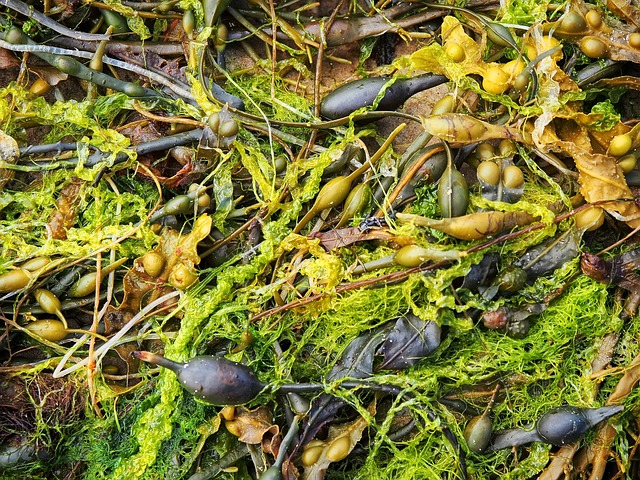
These incredible plant and algae foods grow in or near the ocean. And get this – people from coastal nations have been enjoying them in their cuisine for thousands of years. Sea vegetables come in various shapes, sizes, and colors, ranging from small filamentous species to large kelp forests. They are distributed worldwide and play a crucial role in marine ecosystems, providing habitat and food for numerous marine creatures.
You’ve probably heard about the famous Japanese and Chinese dishes with green algae-based broths and seaweed-wrapped dishes. But hold up, it’s not just them! Nordic cultures, Polynesians, and folks from the Caribbean also love including sea vegetables in their diets. And guess what? These oceanic delights are not just tasty; they’re good for you, too! They’re low in fat, high in fiber, and packed with essential minerals and vitamins.
So, if you’re looking for a healthy option, sea vegetables are the way to go – enjoy them in moderation and let the ocean flavors tickle your taste buds.
Exploring the Diverse Types of Sea Vegetables
Sea vegetables exhibit significant variation. Each type boasts unique nutritional compositions and uses. Here’s the deal with sea vegetables – we can divide them into three cool categories: red, green, and brown algae. Now, here’s where it gets interesting. The most common types of sea vegetables have many names so that it can get confusing in the United Nations or other countries. People often use Japanese names. In this section, we’ll check out some of the most popular ones. So, buckle up, and let’s dive in!
1. Nori
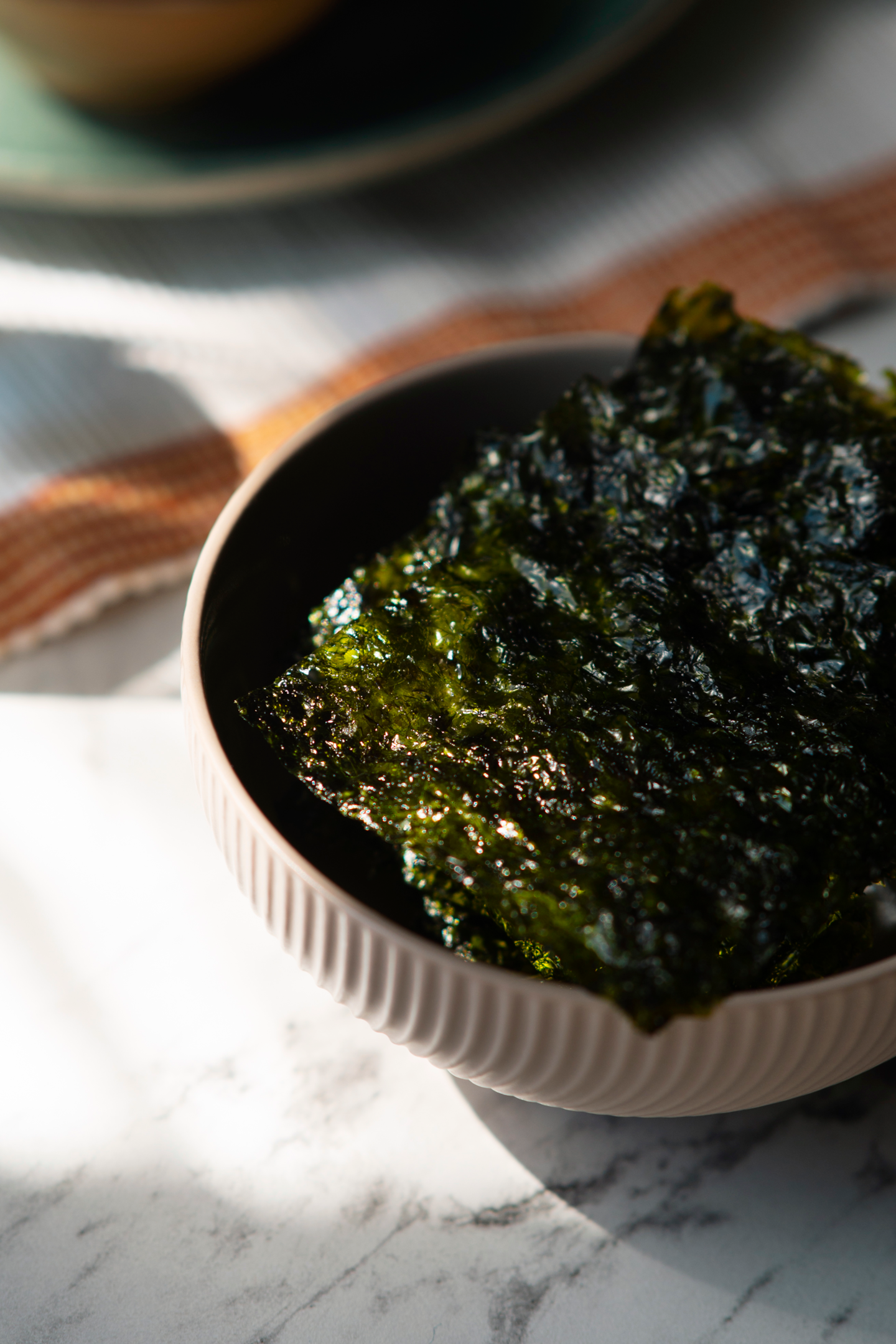
Let’s talk about Nori, the star of Asian cuisines, especially in Japan! It’s a type of edible seaweed, and you might have heard it called a nori sheets. It’s a dark, thin, and paper-like sheet of dried seaweed. You’ll often find the nori sheets wrapped around those yummy sushi rolls or forming those cute little cones for hand rolls. You won’t believe this, They’ve got something pretty special! They contain a rare plant source of vitamin B12. How cool is that? It’s like finding a hidden treasure of nutrients in those tiny seaweed sheets!
2. Dulse
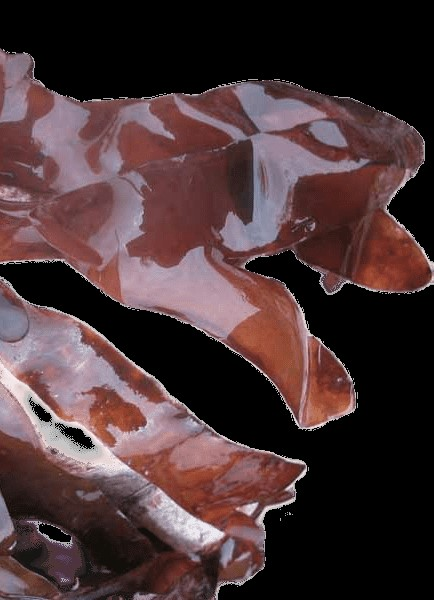
Meet Dulse, the protein powerhouse of the sea vegetable world! This red algae can be found in oceans worldwide and packs more protein than most other sea veggies. It’s like a protein-rich plant food with 21.9 grams of protein per 100 grams. People enjoy dulse in various ways – It can be in dried form and fried as a snack, for flavoring soups and stews, as powdered seasoning, and mixed into dishes with dried dulse flakes.
3. Eucheuma
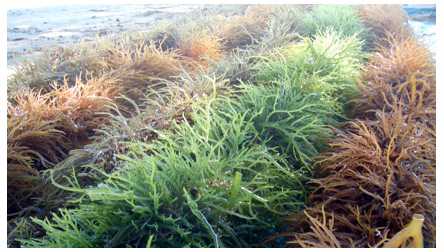
There’s this awesome sea vegetable called Eucheuma, and it comes in three cool colors: brown, green, or red. People in the Philippines love this stuff! They cultivate it for food and even use it to make carrageenan, which is neat. Sometimes they call it guso, and it’s a super popular ingredient in those delicious seaweed salads dishes you’ll find in the Philippines.
4. Badderlocks

Badderlocks, also known as winged kelp. This popular green algae, from East Asia to Europe and North America, can be found worldwide. Here’s the cool part, Badderlocks are a type of ‘kelp,’ which are those large brown algae you might have heard of. And if you take a look at it, it’s got these long, leaf-like appearances. While it grows in various places globally, it’s particularly abundant around the British Isles. And the best part? People have been enjoying badderlocks for ages, both raw form and cooked. It’s a versatile sea vegetable that adds a tasty twist to soups, stews, seaweed salad, and stir-fries.
5. Irish Moss
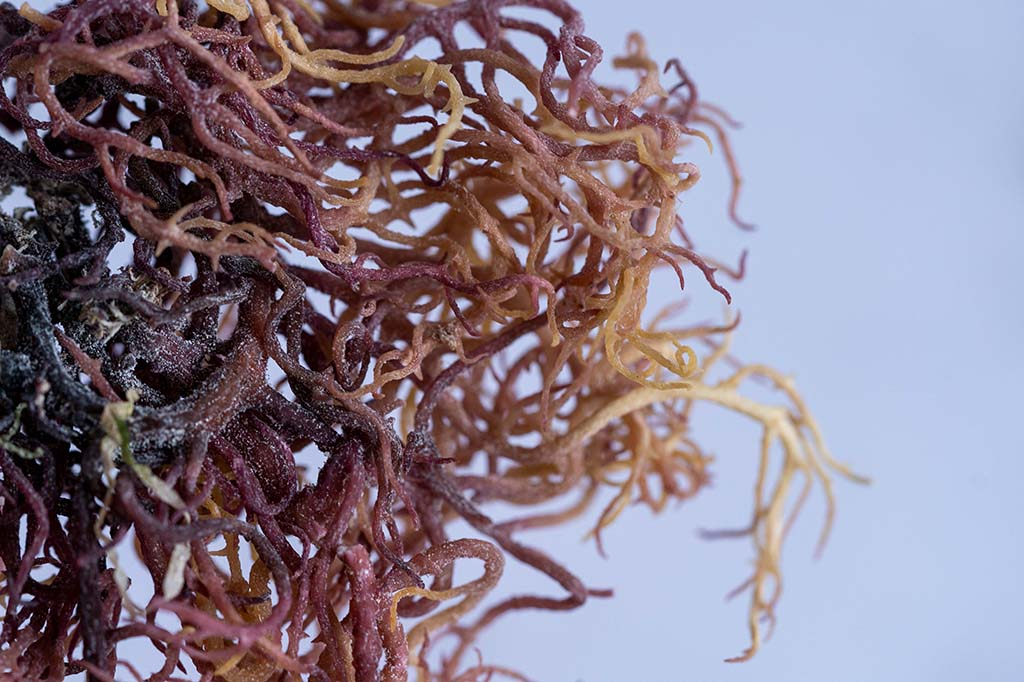
Chondrus crispus, known as Irish moss – it’s not just from Ireland. It’s got a much bigger playground! It grows in places like the United Kingdom, Spain, the United States, Canada, and even as far East as Japan. This reddish-purple sea vegetable is packed with good stuff – we’re talking vitamins and minerals, fiber, protein, and polyphenols. It’s like a nutritional powerhouse from the ocean.
6. Wakame
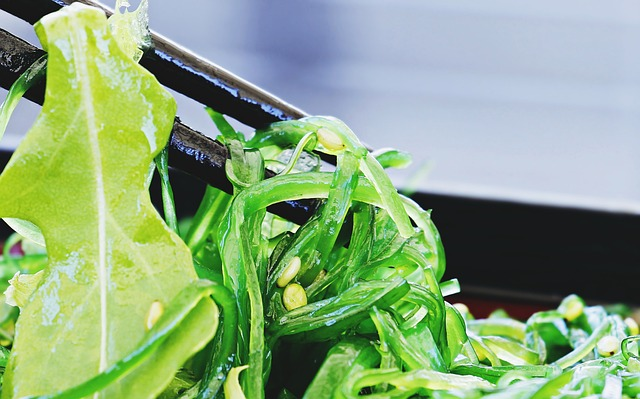
Wakame is a popular sea vegetable grown in many countries like Australia, France, Japan, Korea, and New Zealand. You might have had it in famous dishes like miso soup and seaweed soup. If you can’t find fresh wakame, dried versions are available, too. It’s easy to prepare – soak it in hot water for a few minutes. Studies suggest it may have a health benefits for blood glucose and insulin levels. So, add wakame to your salads, soups, and stews for a tasty and nutritious twist.
7. Sea Grapes
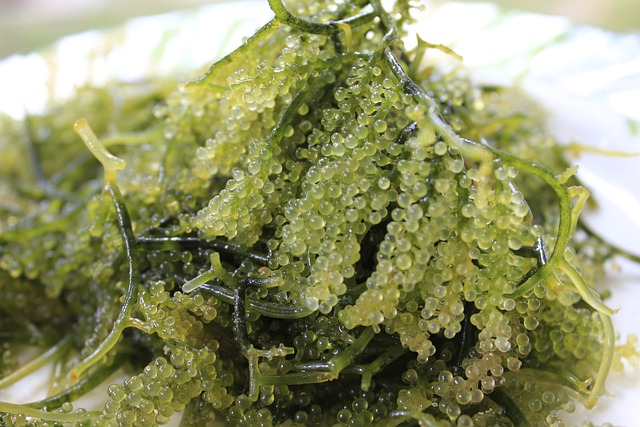
Let’s talk about the cool sea vegetable with a scientific name called Caulerpa lentillifera, but you might know it better as sea grapes or green caviar. And trust me, those names totally make sense! This marine veggie looks like little green caviar balls.
Cultivating these sea grapes is happening in Asia, specifically China, Japan, Philippines, Taiwan, and Vietnam. But the stars of the show are Japan and the Philippines, where they produce most of these delicious sea grapes. And hey, these sea grapes are more than just good looks! They’re packed with beneficial nutrients, and animal studies suggest they also have some potential health benefits. But here’s the deal – there needs to be more research on how these sea grapes affect humans. And we need to be careful with them. There’s a risk of food poisoning, so proper storage is a must.
8. Hijiki
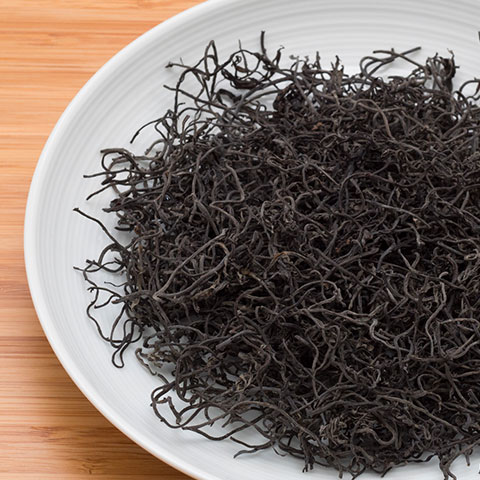
This fantastic sea vegetable has been enjoyed in East Asia for centuries! It’s a type of brown algae, and people in China, Japan, and Korea love it. Here’s the thing with hijiki: after it’s harvested, it’s boiled and dried, getting that cool dark color.
When cooking, soak the dried seaweed in water and then add it to your dish or munch on it alone. Like most seaweeds, it contains fiber, vitamins, and minerals. But wait, there’s something to be cautious about Hijiki. It can contain inorganic arsenic in a high levels, which is not good news. It’s a human carcinogen. That’s why some governmental agencies, like the United Kingdom’s Food Standards Agency, have advised folks to avoid hijiki. Studies on animals have shown that arsenic accumulates in rats fed hijiki, which is pretty concerning.
9. Arame
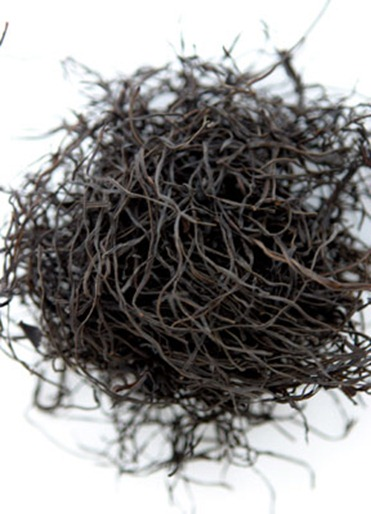
This delicious sea vegetable is popular in Japan and Korea! Arame is a type of brown algae, and you’ll usually find it dried and looking dark and brittle. But don’t be fooled by this brown seaweed – it’s a flavor powerhouse! You can add arame to soups and stews, and here’s the magic – as the water boils, the seaweed comes back to life and infuses the dish with incredible flavors. You’ll get those umami flavor tastes and a hint of salty flavor that’ll make your taste buds dance. And that’s not all! arame can also play a starring role in stir-fries. Just cut it into long, thin strips, and it’ll turn your stir-fry into a flavor sensation.
10. Kombu
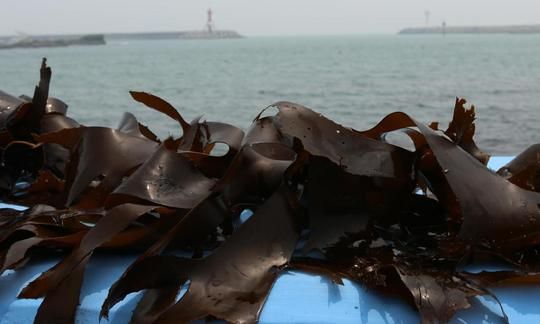
It is a large brown algae, also known as kelp. You can find kombu in oceans worldwide, but it’s most loved and cultivated in China, Japan, and Korea. People there know it’s the secret to incredible flavors in soups and stews! It’s got a tough texture, so it takes some time to soften when you boil it in water. But don’t worry, that makes it perfect for seasoning dishes and adding that delicious taste to soups and stews. But hey, we’ve got to talk about iodine too.
Kombu is a real iodine superstar, which can be both good and not-so-good. It’s a fantastic source of iodine, but here’s the catch – it’s easy to consume too much iodine. Just one dried gram of kombu can have as much as 2353 mcg of iodine, while the FDA recommends only 150 mcg per day. So, while kombu adds incredible flavors, it’s essential to enjoy it in moderation and be mindful of your iodine intake.
11. Ogonori
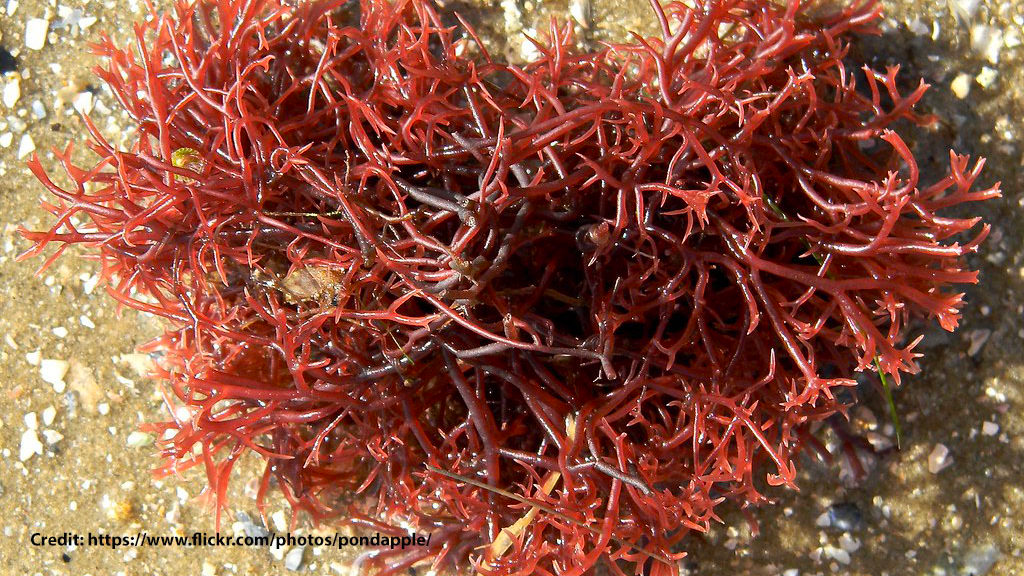
This red algae grows all over the world, but guess what? China, Japan, and Korea are rocking it as some of the top producers. Now, here’s the fun part – you can enjoy this seaweed in different ways. You can munch on it alone for a delightful and nutritious snack. Or how about throwing it into a ‘seaweed salad’ for that extra oceanic goodness? Oh, and remember to add it to your soups and stews for some serious flavor magic.
12. Sea Lettuce
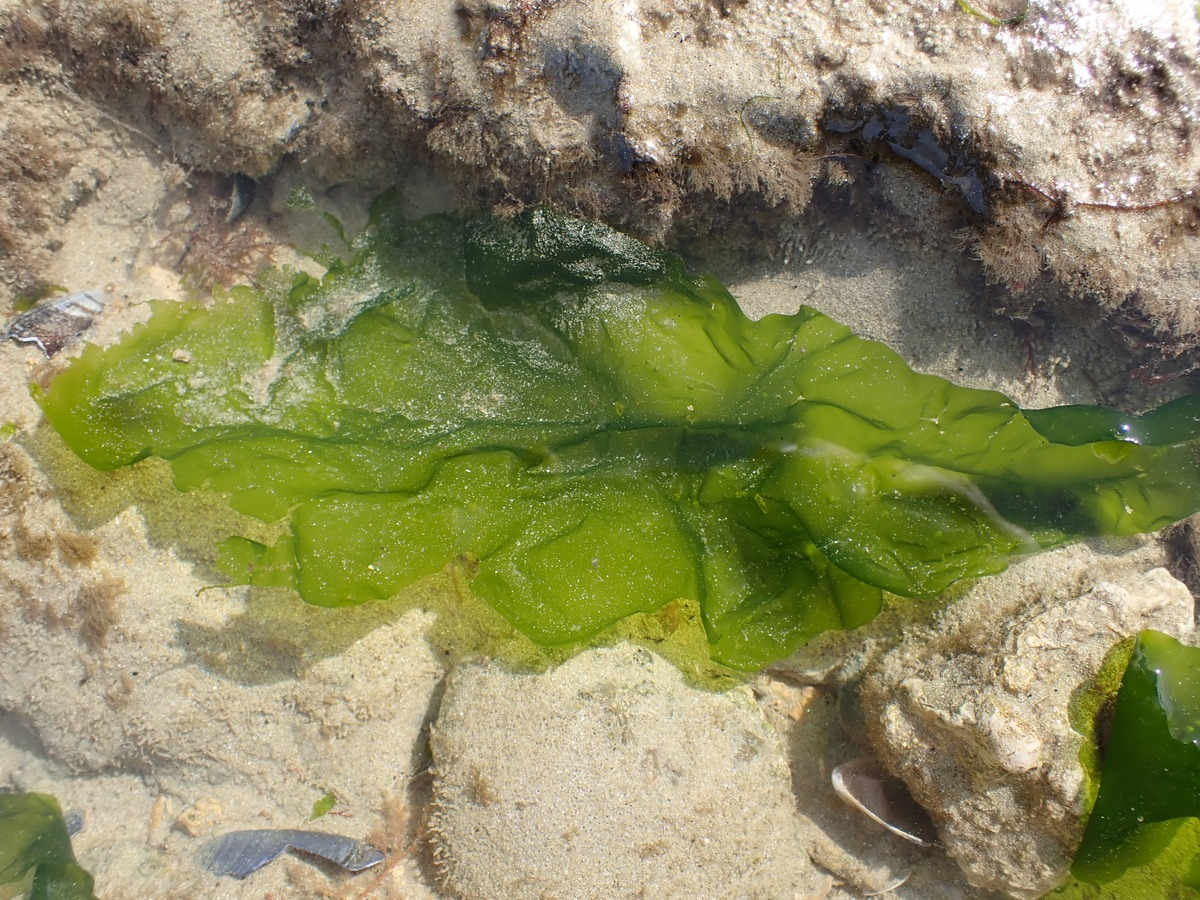
This awesome green algae grows all around the world, hugging coastlines like a pro. And guess what? It looks like delicate lettuce leaves, hence the name sea lettuce – how cute! Now, here’s the science part – research shows that sea lettuce is a treasure trove of minerals. Yep, it’s got a whole bunch of essential minerals packed in there, just waiting for you to enjoy.
But, there’s a little catch – depending on where it grows, sea lettuce can absorb heavy metals like lead. So, while it’s a fantastic and nutritious addition to raw vegetables, salads, soups, and stews, we must be mindful of where it comes from.
13. Aonori
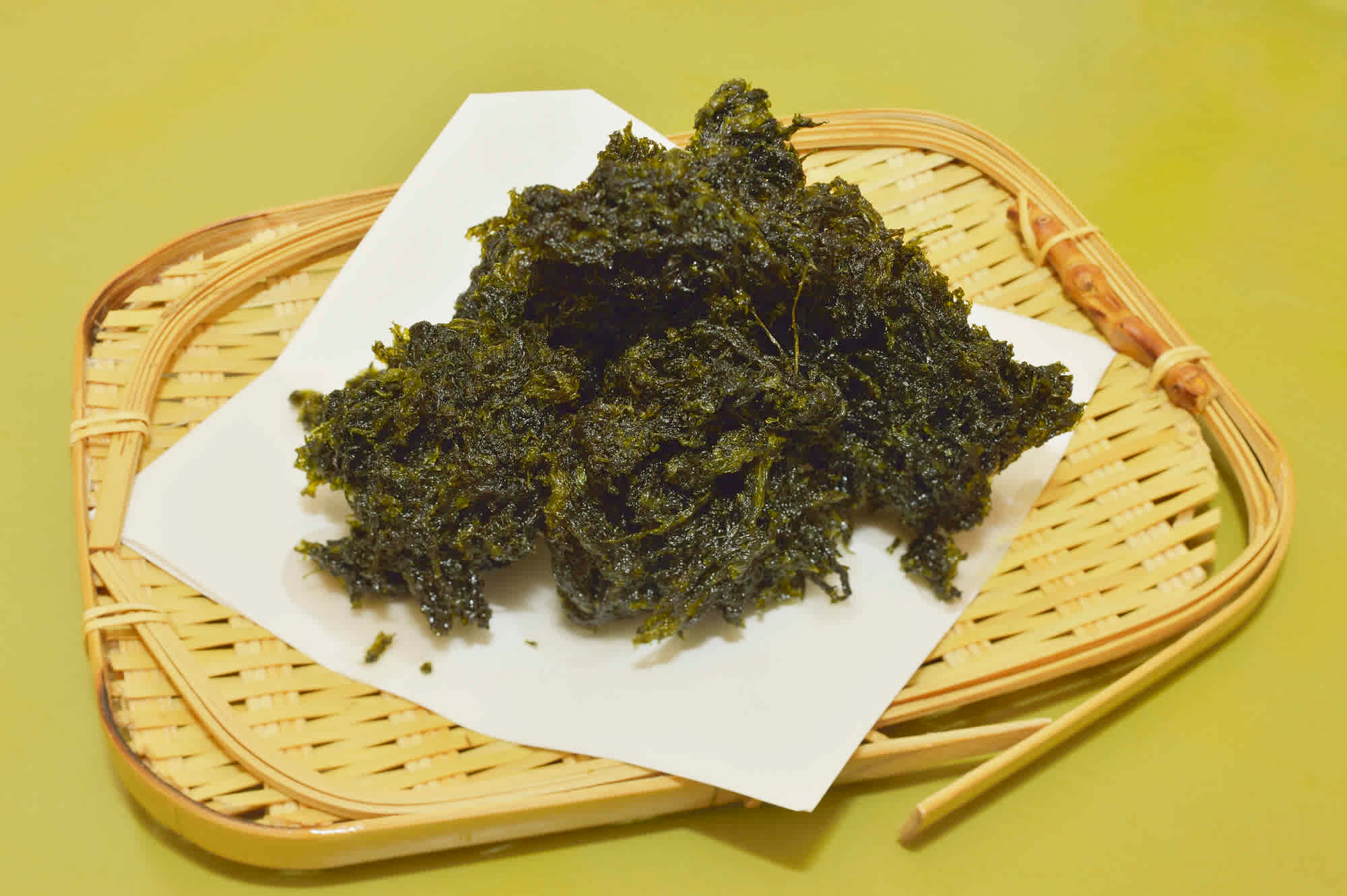
The cool green algae that’s super popular in East Asia! Its Japanese name is aonori. It’s like a green algae superstar in countries like Korea, Japan, and Taiwan, where they cultivate it and use it in various dishes. But here’s the exciting part , aonori goes on a global adventure! You can find its dried and powdered form, known as aonori flakes,’ worldwide. It’s like a flavor bomb waiting to explode in your dishes.
14. Oarweed
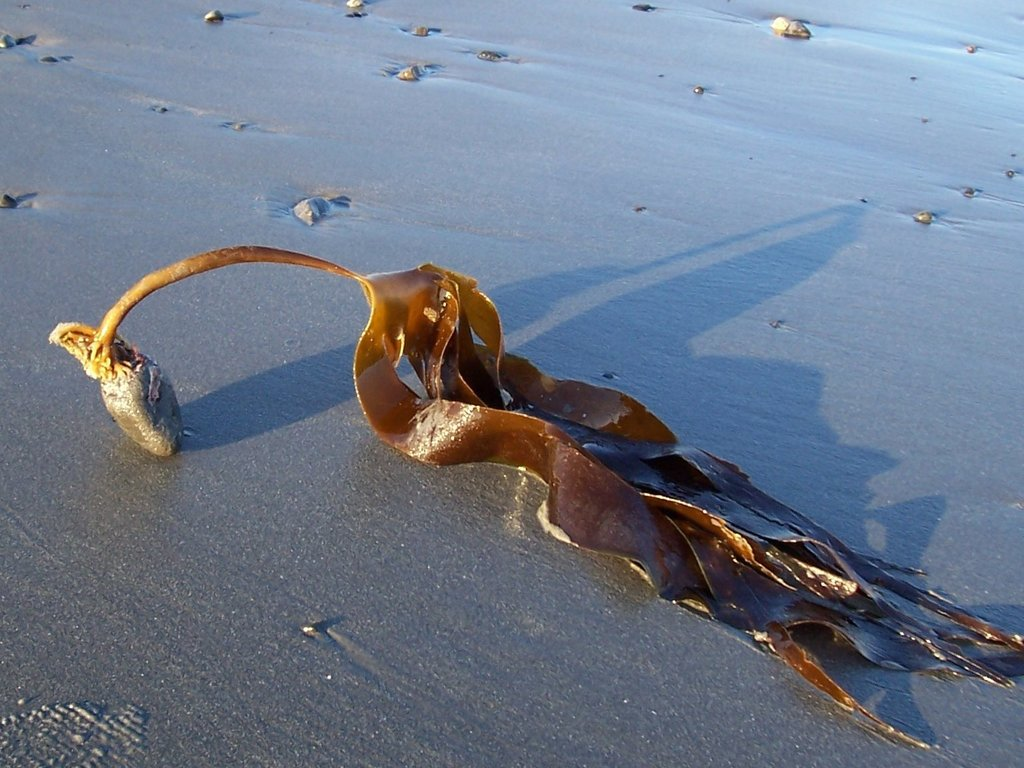
This fantastic large brown algae, also known as Laminaria digitata! You can find it growing in the North Atlantic region, from the British Isles to Scandinavia, Greenland, and even the eastern regions of the United States. Now, here’s the culinary magic – like kombu and other brown seaweeds, Oarweed is a flavor enhancer extraordinaire! People love using it to add that special touch to soups, stews, and other dishes. And hey, you can even use it to make a fantastic seaweed stock – a flavor-packed secret to elevate your culinary game.
What Do Sea Vegetables Contain in Terms of Nutrients?
Sea vegetables are incredible little powerhouses of nutrients, offering a variety of essential goodies for your health. The exact nutrient punch can vary depending on factors like the species, where it was harvested, and when it was collected. But get this – some species have a whopping 47% of plant protein in their dry weight, making them an awesome option for those following a vegetarian diet. Now, let’s talk about the goodies you can find in sea vegetables, whether dried or raw. Check out what sea veggies have to offer:
- Fiber
- Protein
- Iodine
- Potassium
- Calcium
- Magnesium
- Iron
- Vitamin A
- Vitamin C
- Folic acid (Folate)
So next time you snack on some sea vegetables, know you’re getting a whole bunch of nutritional goodness. Enjoy the tasty and healthy journey with every bite.
Do Sea Vegetables Offer Any Benefits When Included in Your Diet?
Including seaweed in your diet can be a simple and nutritious way to boost your health. Sea vegetables offer various benefits, such as aiding weight loss, lowering blood pressure, supporting heart health, and possessing anti-inflammatory and antiviral properties. Additionally, seaweed contains other nutrients that can help strengthen our immune system. So, why not add seaweed to your meals and snacks to enjoy these fantastic health perks.
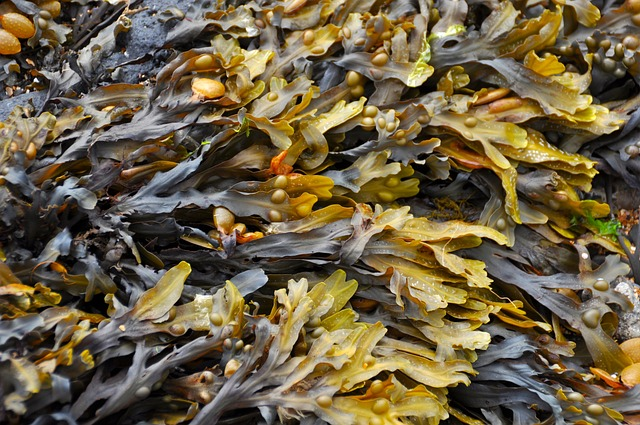
Edible Algae but Be Cautious
Hey, before you go grabbing any seaweed products, let’s talk about being cautious. You know how amazing seaweed is, packed with all those nutritious vitamins and minerals? Well, it turns out they can also absorb not-so-amazing heavy metals from the ocean they grow in. We’re talking about heavy metals like arsenic, lead, and cadmium. Arsenic is particularly common in seaweed products out there. So, here’s the deal – when you’re buying seaweed, make sure it comes from a trusted source, okay?
You want to make sure it’s harvested from a clean area in the ocean. And don’t eat a large amount of seaweed, even though it’s full of beneficial ingredients. Overdoing it can put us in danger, so moderation is key.
What Are Some Ways to Prepare Sea Vegetables?
Preparing sea vegetables is like unlocking a world of culinary adventures. So, most of the time, you’ll find seaweed in dried sheets. But before munching on them, you’ll want to rehydrate them. How? Easy! Just toss them into your cooking dish and let them soak up the deliciousness. Soups are perfect for this – chop the seaweed into strips and you can add it to your miso soup. Now, for a quicker method, dip the sheets in water for a brief soak until they reach your desired texture. Quick and simple, right?
Now, here’s the cool part – seaweed isn’t just for sushi rolls! You can add it to so many dishes – from casseroles to baked goods. Keep some granulated or flaked kelp around – it’s an awesome salt substitute. Ever tried kelp noodles? They’re magical! No cooking required, and they’re sugar- and fat-free. Just toss them into your favorite dish.
And guess what? Some folks even eat seaweed raw! but before eating it raw you must wash it to removed the ocean debris. For example, in Japanese and Korean cuisine, they mix fresh, raw arame with sesame oil or olive oil and serve it with lettuce. There are endless ways to enjoy seaweed, and you’re bound to find a dish that suits your taste buds. If the first try doesn’t hit the spot, be adventurous and give it another go. The health benefits are worth exploring these ocean wonders in your kitchen! Happy cooking and savoring those fantastic health perks.
Conclusion
It’s been an exciting adventure, discovering the wonders of marine algae and the delicious flavors they bring to our plates. From Nori to Oarweed, We’ve explored the diverse and nutritious world of sea vegetables found all around the globe. These incredible plants are not only tasty but also pack a powerful nutritional punch, offering essential minerals, vitamins, fiber, and even plant protein. We’ve learned that sea vegetables come in different colors, shapes, and sizes, and each variety brings its unique health benefits.
While enjoying them, we must be cautious. Now that you know all about sea vegetables, it’s time to get creative in the kitchen! Try adding seaweed to your soups, salads, and stews. And don’t forget the raw options too – whether it’s the delicious nori wrapped around sushi or a refreshing Arame salad. Embrace the goodness of sea vegetables and let their flavors transport you to the enchanting depths of the ocean. So, dive in and make sea vegetables a delightful and nutritious part of your culinary journey! Bon appétit.
FAQs
What's the Difference Between Seaweed and Sea Vegetables?
Seaweed is a broader term that encompasses all types of marine algae, while sea vegetables specifically refer to the edible varieties of seaweed that are safe for human consumption. Essentially, all sea vegetables are seaweeds, but not all seaweeds are necessarily considered sea vegetables due to potential toxicity or inedibility.
Does Seaweed Count as Veggies?
Yes, seaweed is often considered a type of vegetable and is commonly referred to as a sea vegetable. Seaweeds are marine algae that are edible and are consumed as part of various cuisines around the world. They are nutrient-rich and offer several health benefits.
🌱 Explore More With Us! 🍉🌽
Discover the world of Sea Vegetables and embrace the vegan lifestyle! 🔪
👉 Engaging Content: Follow us on Facebook, Instagram, Pinterest, and Twitter for exciting posts about fruits, veggies, and the vibrant vegan world.
👉 Product Reviews: Check out honest reviews on plant-based products.
👉 Connect with a Community: Join our passionate community of vegan enthusiasts, share your experiences on storing a fresh herbs, and learn from like-minded individuals who love cooking with fruits and veggies!
📌 Find Us on Social Media:
🔹 Facebook: VeganGlobetrotter Join us on our Facebook page, VeganGlobetrotter, where we share mouthwatering plant-based recipes, and tips to inspire your vegan lifestyle.
🔹 Instagram: _veganglobetrotter Follow us on Instagram at _veganglobetrotter to embark on a visual journey of delectable vegan dishes.
🔹 Pinterest: theveganglobetrotter Dive into the world of plant-based goodness and wellness with our Pinterest account, theveganglobetrotter.
🔹 Twitter: VeganGlobetrot Stay up-to-date with the latest vegan trends, insightful articles, and exciting updates by following us on Twitter at VeganGlobetrot.
🌍 Let’s embark on a vegan journey and a celebration of the vibrant world of vegan living! 🌱🌏



Don't miss out
when new recipes and information are added!
Join our newsletter for free recipes,
healthy living inspiration, and special offers
You have Successfully Subscribed!